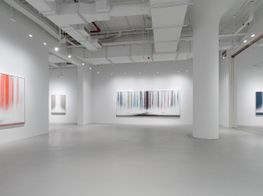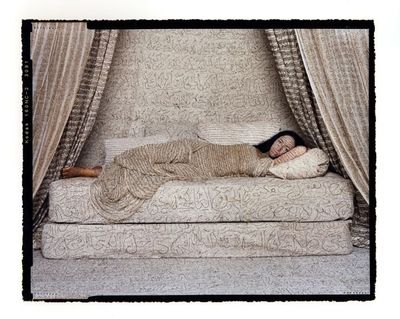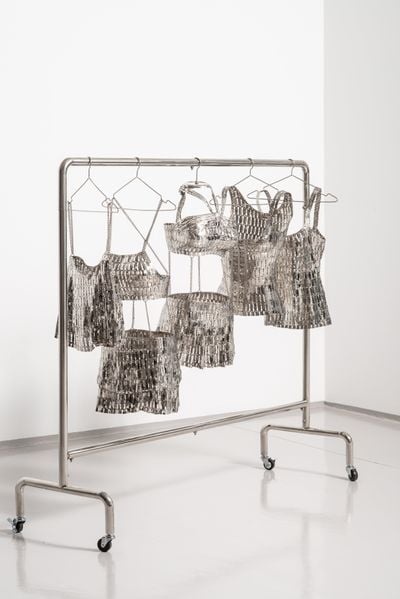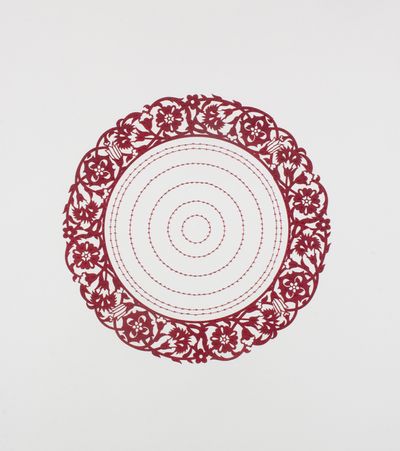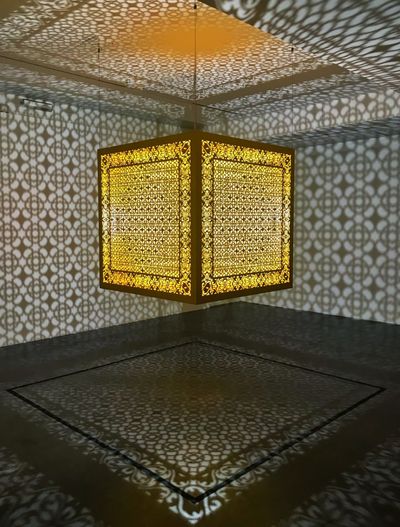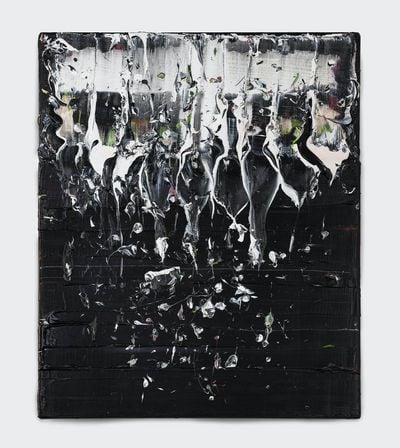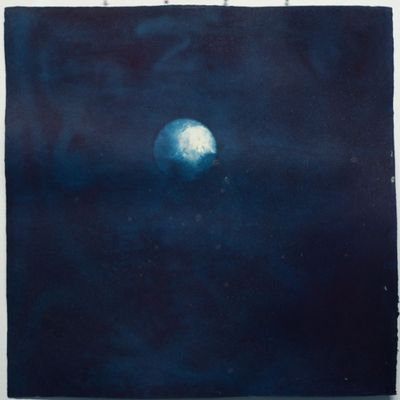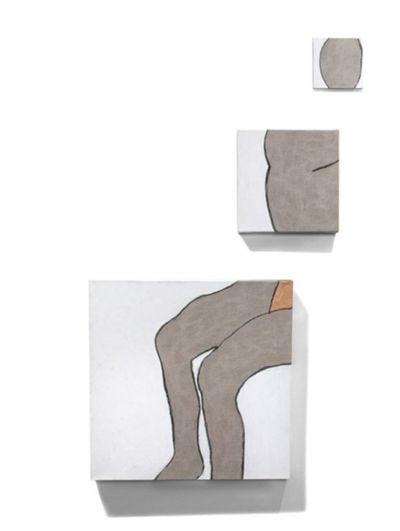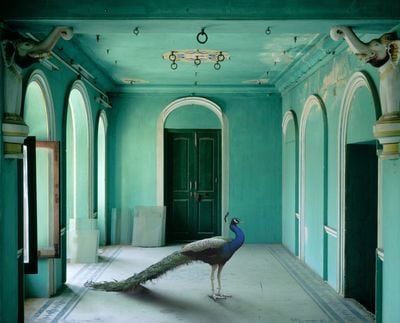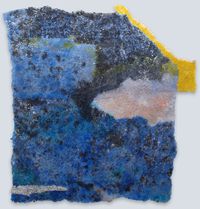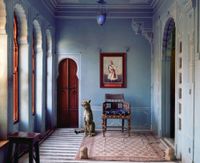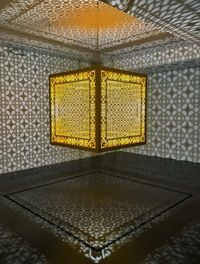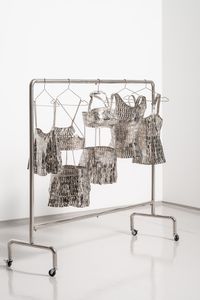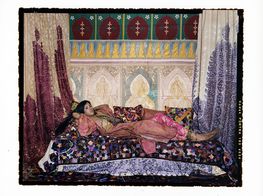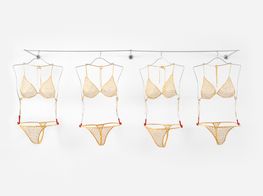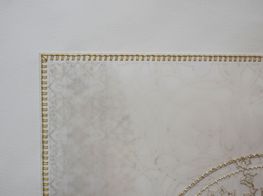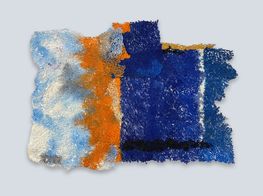The Feminist Aesthetics of 'A Room of Her Own'
What constitutes a feminist aesthetic? At A Room of Her Own at Sundaram Tagore Gallery in Singapore (14 January–19 March 2022), eight artists unpack a fragmented and complex subject.
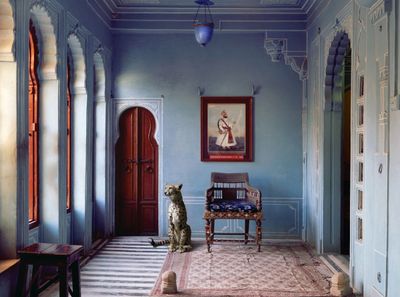
Karen Knorr, The Maharaja's Apartment, Udaipur City Palace (2010). Archival pigment print, edition of 5. 80 x 100 cm. Courtesy Sundaram Tagore Gallery.
Among the works are feminist interventions in art history that involve the production of a critical position for looking at, analysing, and excavating art and its multiple registers.
Morocco-born photographer Lalla Essaydi's chromogenic prints Reclining Odalisque #2 (2008), Harem #7 (2009), LFM Revisited #2 (2010), and Harem Revisited #32 (2012).
Clearly informed by Eugène Delacroix's Algerian scenes—and responding to the Orientalist stereotypes such works propagated—Essaydi's images depict Arab women in orientalist settings, their clothes and bodies adorned with Arabic calligraphy written in henna. In one, a woman reclines on embroidered silky cushions and a luxurious bed beautifully ornamented with gold and satin.
Dhaka-based artist Tayeba Begum Lipi explores the power of the gaze and how it is instrumental in constructing gender values in general and supporting patriarchy in particular.
Her installation The Rack I Remember (2019) consists of bras, strappy tops, and miniskirts made from stainless steel razor blades hanging from clothes hangers on a wheeled garment rack. Any sensual connotations sparked by the skimpy outfits are countered by their rigid armour of blades.
Elsewhere, art forms that are traditionally considered the province of women, such as needlework and interior decorating, subvert or transcend their tropes.
Across this show, 'feminist art' is neither a style or a movement, but a constellation of aesthetics and individual expressions.
Pakistan-born, America-based artist Anila Quayyum Agha's Flowers (Dark Red) (2017) and Flowers (Mustard Yellow) (2017) are decorative mixed-media circular compositions on paper featuring branches and garlands of leaves and flowers, closely resembling mandalas.
Particularly striking is Agha's Hidden Diamond – Saffron (2019). A gigantic cubic lantern hung from the ceiling made of laser-cut, lacquered steel that illuminates the room with bright yellow light, creating magnificent, geometric-patterned shadows on the walls, ceiling, and floor.
The lantern and its reflections allude to the richly embellished historical buildings and public spaces in Pakistan where the artist spent most of her teenage years.
Made from plucked Japanese handmade paper, acrylic paint, and thread, the abstract landscape of So many stars in the sky, some of them and some of me (2018) by India-born, Detroit-based Neha Vedpathak conveys an aesthetic experience that is revealed through intimate material engagements. These include spending hours separating the papers' fibres with a tiny pushpin.
Singaporean artist Jane Lee chooses abstract painting over needlework, with black-and-white acrylic pieces I Don't Know I and II (both 2021) showing shards of carved paint, varied brushstrokes, and marks, drips, bleeds, and spotting that lend a sculpted or collaged facture to the surface.
In the former, drips that appear like ice white stalactites merge with pitch-black humps and bumps. In the latter, flecks of blue disperse across what looks like a crumbling brick-patterned wall.
Across this show, the concept of 'feminist art' is neither a style or a movement, but a constellation of aesthetics and individual expressions.
Japanese-American artist Miya Ando's moon drawings on Japanese Kozo paper are based on the artist's observations of the night sky and employ precise balances of different shapes of the moon and colours to tell spatial stories. 2 Full Moon (Jugoya) August 3 2020 (2020), for instance, suggests that the moon is actually in the process of falling, or rising.
Domestic space is marked by several variations in the work of American artist Susan Weil, which teeters between abstraction and figuration, and over the years has produced thickly painted close-up views of her own home as well as shaped canvases and installations that feature body parts.
For Sitting in Space (2020), Weil rendered the line and volume of a woman's figure in cut linen, with copper acrylic paint on the groin and charcoal lines adhered to white acrylic paint on canvas, so that the head, torso, and legs are split across separate panels arranged in a vertical line.
London-based photographer Karen Knorr's photographs, on the other hand, focus on grand interiors that are digitally superimposed with real images of exotic animals.
In The Queen's Room, Zanana, Udaipur City Palace (2010), an aged, empty, turquoise-green room defined by majestic arches and a mosaic marble floor hosts a solitary peacock.
The incongruity of the scene, in which a peacock stands-in for a queen of yesteryear in a decaying space, speaks to the diverse strategies employed by the artists in this show. While works do not back down from social realities, they do not shrink from the role art must play in the service of fantasy and the imagination, either. —[O]

